
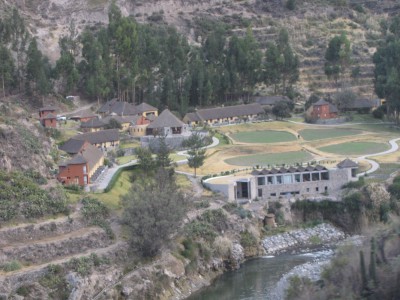
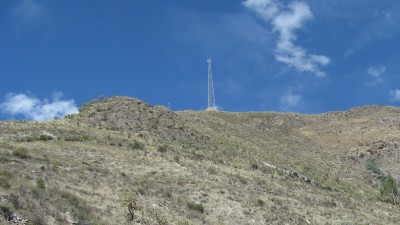
Saturday, June 5, 2010
We did get our early wakeup call, and ate breakfast quickly, pausing to stare at the incredible sunrise. There was a problem with credit card at checkout, so we paid the bill (dinner the night before) in cash. When we boarded, our van was half full, then we went to pick up the other people in Chivay. Only we had seen the hotel the night before, since we were dropped off last. Today, the half the people on the bus were getting pictures as we left, so they must have liked it. On the drive into Chivay, we saw the remnants of a bus crash from a couple of days earlier. It looked really bad, but "only" two people had died.
 |
|
 |
 |
We stopped at the main square in Chivay, and there were a number of little kids dancing, despite the fact that it was 7 in the morning on a Saturday.
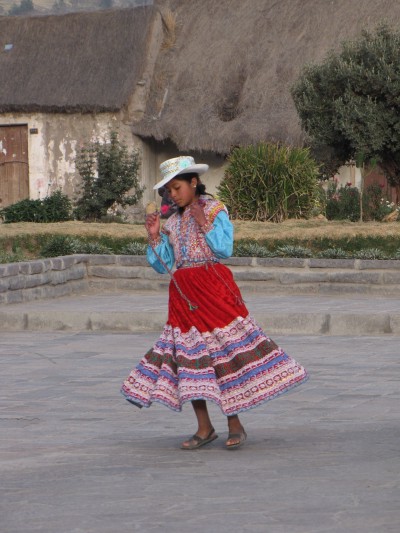 |
We drove west, on the south side of the Colca River, passing several lookouts. There were lots of terraced hills, especially on the north side of the river.
Presumably, the north facing slopes are the best places for growing plants, similar to how south facing slopes are the best places in the Northern Hemisphere. Mari Luz told us that there were only 60,000 people in the general area before the Spanish arrived, and only 6000-7000 after, mostly due to smallpox. We passed an area right near the road where there were burial sites on the side of a cliff, but can't remember why it was there or what purpose burying people on the side of a mountain served.
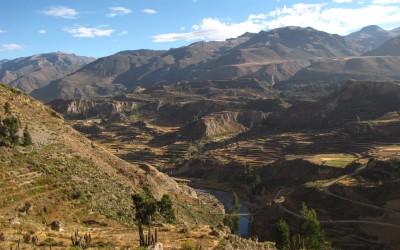 |
 |
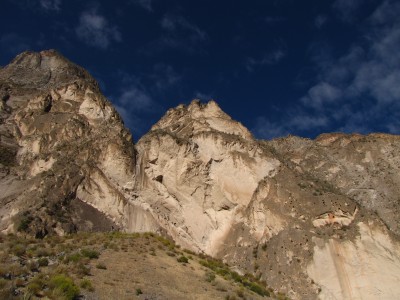 |
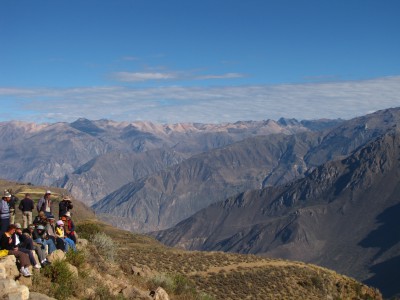 |
There were lots of people at the Condor Lookout, but there were several viewing sites, some lower down, some higher up. Mari Luz, had us at the higher one, figuring that it would be easier to walk down than walk up should we decide to move. The condors rise up the valley every morning by following the thermals created by the temperature differential. At first we saw one condor far away, then a couple. Then we started to see a fair amount, and one by one, about a half dozen landed on a tree stump a little below us.
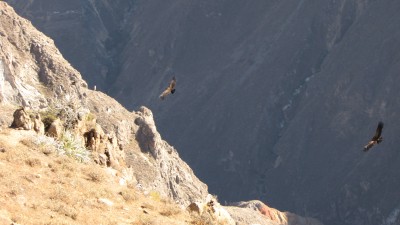 |
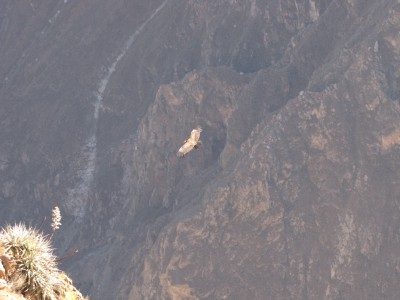 |
 |
 |
 |
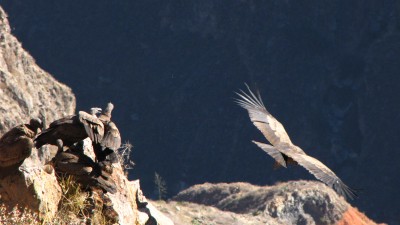 |
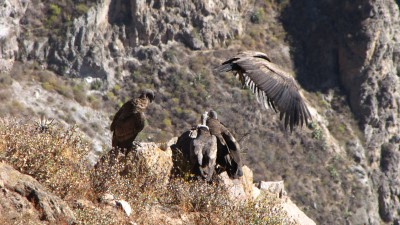 |
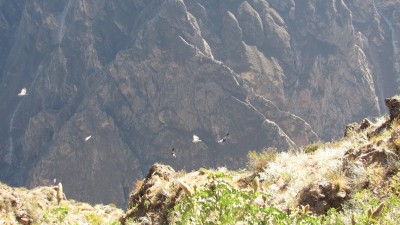 |
After awhile, we started moving around, looking for different vantage points. The north side of the canyon was dark, so going more to the east, and shooting back to the west, tended to work out the best. While there were lots of birds, they weren't stationary, making it very difficult to get a clean shot that was in focus. We were there just over an hour, and it was everything we expected.
 |
 |
 |
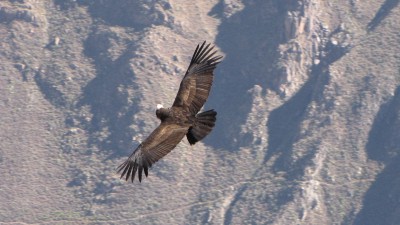 |
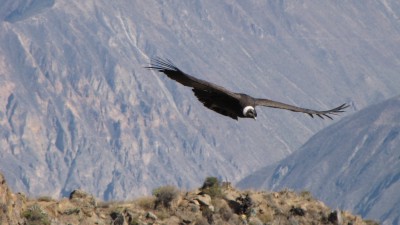 |
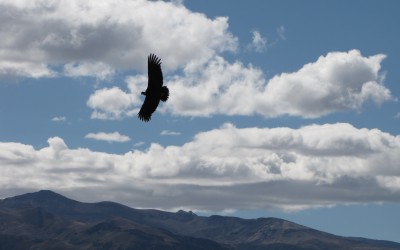 |
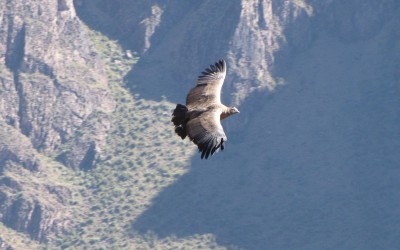 |
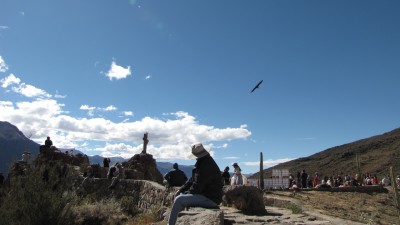 |
On way back, we stopped in the small town of Maca, and also at some viewpoints for the terraced hills. The church in Maca was extremely nice for anywhere, let alone a tiny city in rural Peru, but it was probably much easier when the Spanish just took all of the locals gold to build the church. In Maca, Justin got his picture taken with an eagle, which surprisingly the eagle did not break the skin when grasping onto his hands.
 |
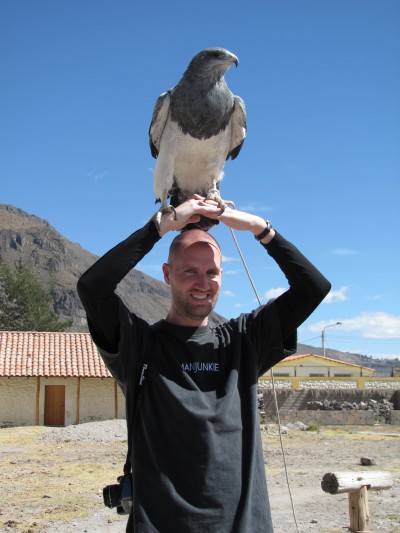 |
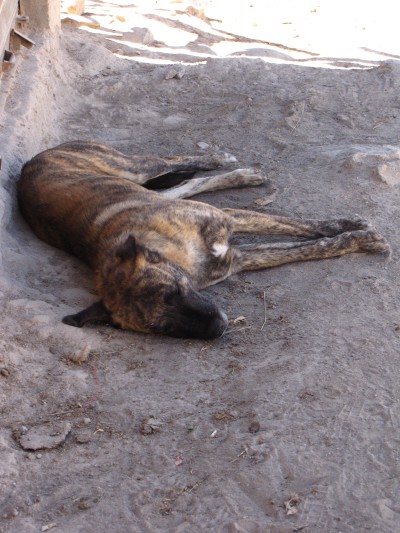 |
At the viewpoints, we marveled at how extensive they were, not only because of how long ago they were built, but because only 60,000 lived in the entire area. These plainly were not the "dumb indians" that our textbooks taught us about in school. We ate lunch at the same place in Chivay, then headed back towards Arequipa. Right before leaving Chivay, half the bus left to get on another bus, headed for Puno.
 |
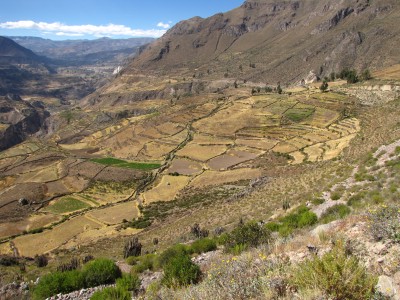 |
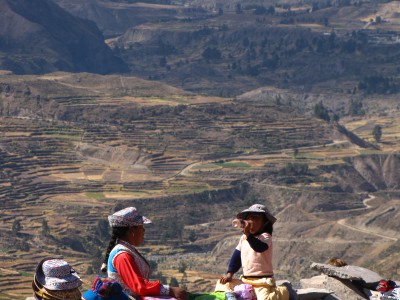 |
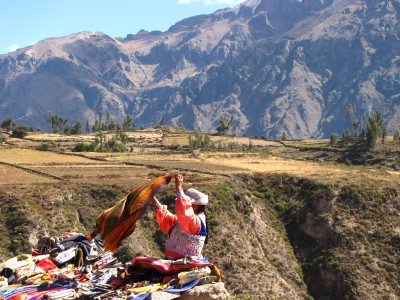 |
 |
 |
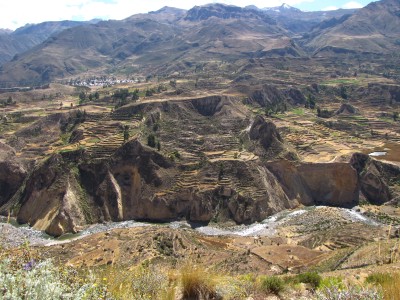 |
 |
 |
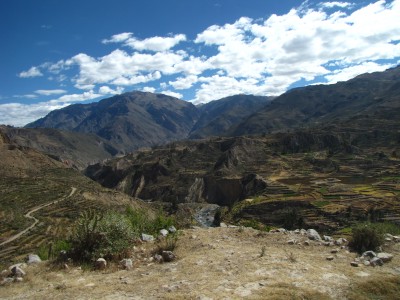 |
Having now seen all the places and transfers first hand, this is the itinerary we would recommend for people visiting south Peru:
Instead of doing the above, we ended up backtracking from Paracas to Lima just to fly back south. As an analogy, it would be like driving back from San Luis Obispo to San Diego just to fly from San Diego to San Francisco - it doesn't save much if any time, you see the same scenery, and it costs more. Also, we backtracked from Chivay to Arequipa, just to fly from Arequipa to Lake Titicaca. Again, not much if any saved time, no new scenery, hassle of the airport, increased cost. So learn from our mistake.
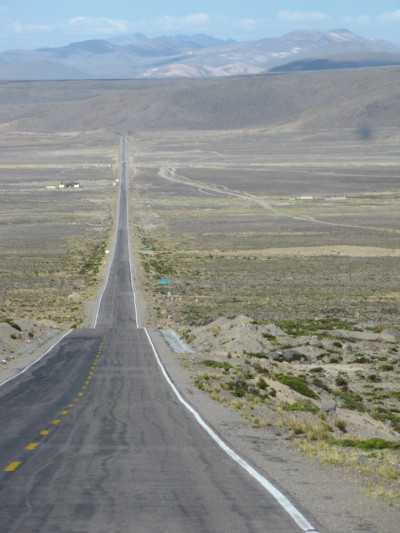 |
|
 |
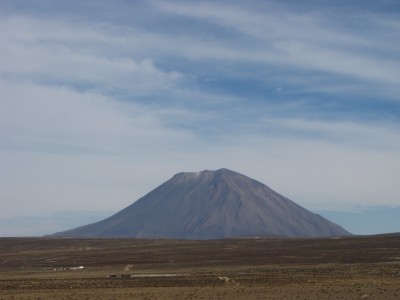 |
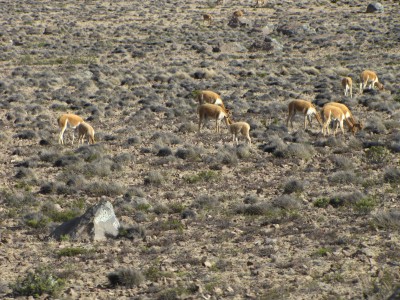 |
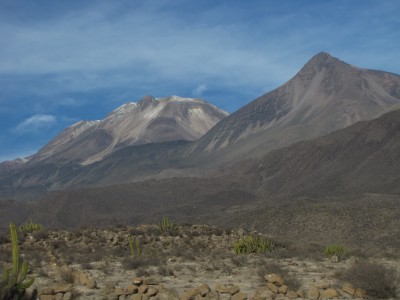 |
Back to the day, the (backtracking) drive back to Arequipa was same way as we came, and the only stop was Patahuasi. We saw some vicunas again, but unfortunately we did not stop - they were right next to the road, but we were driving too fast to take any close-ups. We were the first dropped off in Arequipa, and there was no problem checking in at the Casa Andina - the travel agents had arranged it, and we would just pay them later. We did some laundry and backed up pictures and video.
We went to dinner at El Vinedo - only a short walk away - and Crystal got cuy while Justin got ostrich. The cuy (guinea pig) tasted fine, but was difficult to eat because of all the tiny bones. Crystal put the picture on the internet, and our friend Cameron wrote "that looks like something the dogs would bring you." After dinner, we went to sleep early, knowing that for once we would have no wakeup call early in the morning.